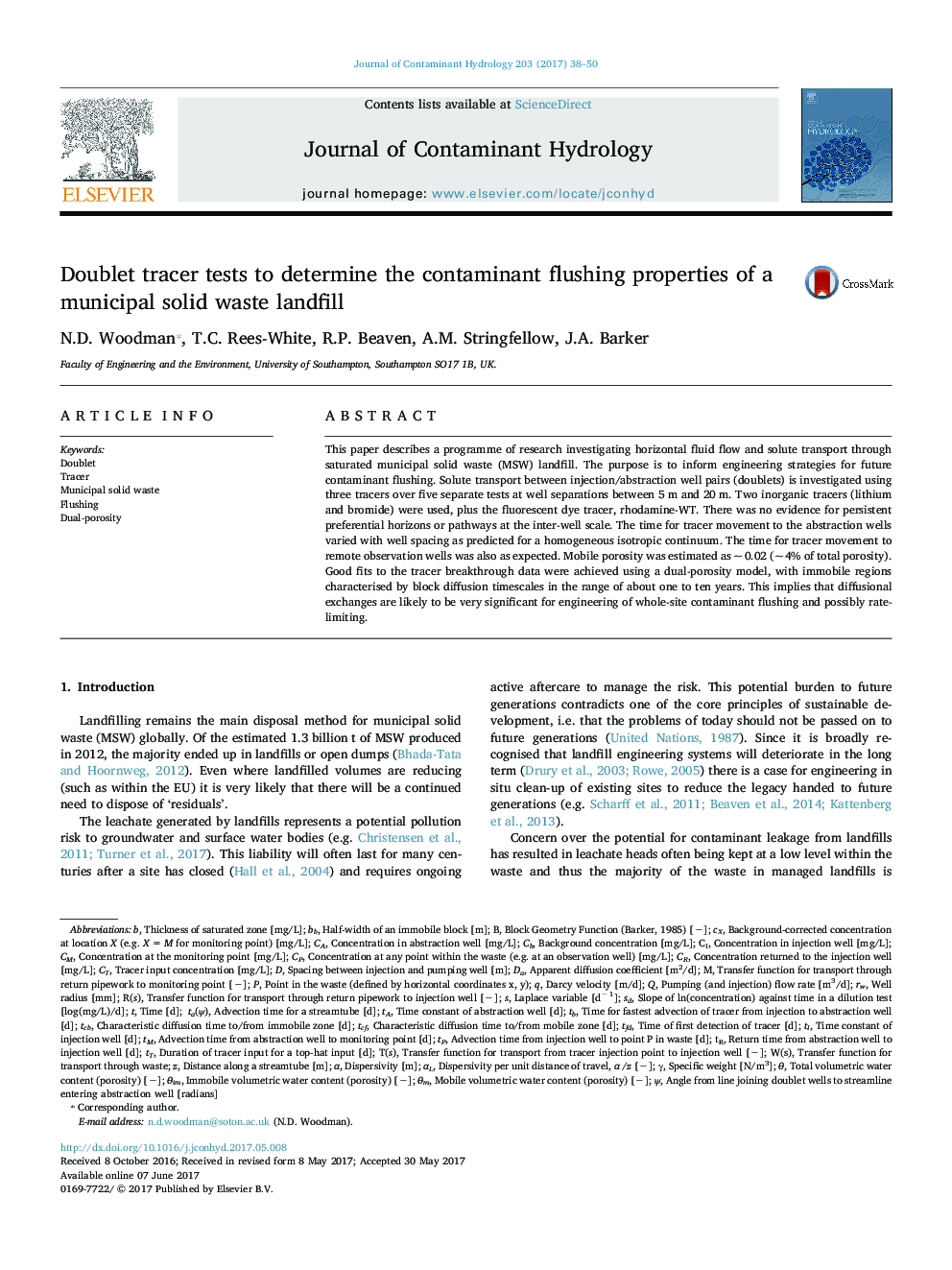| Article ID | Journal | Published Year | Pages | File Type |
|---|---|---|---|---|
| 5765854 | Journal of Contaminant Hydrology | 2017 | 13 Pages |
â¢Closed-loop doublet tracer tests are effective at characterising transport in waste.â¢Transport in waste is predictable using a double-continuum dual-porosity model.â¢Diffusion is likely to be rate-limiting for solute-flushing from landfill sites.
This paper describes a programme of research investigating horizontal fluid flow and solute transport through saturated municipal solid waste (MSW) landfill. The purpose is to inform engineering strategies for future contaminant flushing. Solute transport between injection/abstraction well pairs (doublets) is investigated using three tracers over five separate tests at well separations between 5Â m and 20Â m. Two inorganic tracers (lithium and bromide) were used, plus the fluorescent dye tracer, rhodamine-WT. There was no evidence for persistent preferential horizons or pathways at the inter-well scale. The time for tracer movement to the abstraction wells varied with well spacing as predicted for a homogeneous isotropic continuum. The time for tracer movement to remote observation wells was also as expected. Mobile porosity was estimated as ~Â 0.02 (~Â 4% of total porosity). Good fits to the tracer breakthrough data were achieved using a dual-porosity model, with immobile regions characterised by block diffusion timescales in the range of about one to ten years. This implies that diffusional exchanges are likely to be very significant for engineering of whole-site contaminant flushing and possibly rate-limiting.
